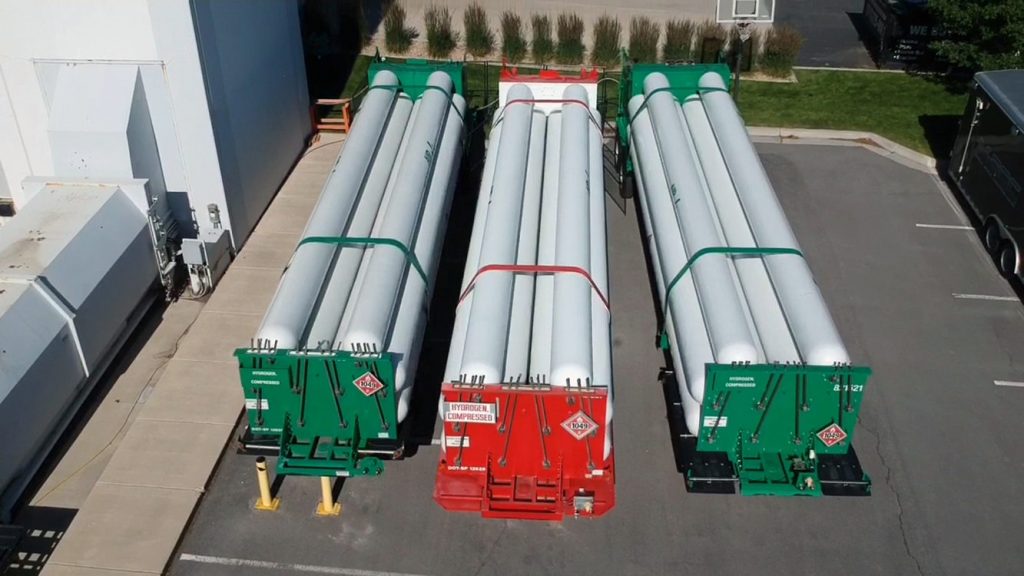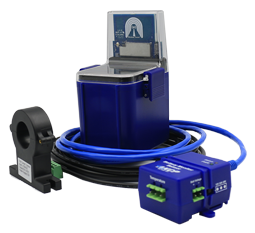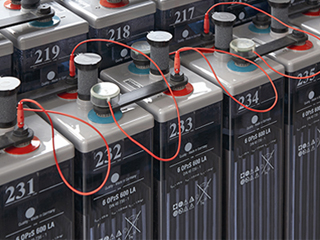Data centers require high-quality and reliable uninterrupted power 24/7. Any disruption in the power source leads to serious consequences, downtime and damage to equipment. Data can be corrupted, and servers can malfunction. This all results in lost revenue. Downtime can cost tens of thousands of dollar per hour.
Backup power typically comes from generators. Backup generators supply power when the main power source experiences disruptions. They rely on different types of diesel to function. Hence, generators are not very eco-friendly.
Today, sustainability is the movement for data centers. More and more alternative technologies are coming out. One of these is the hydrogen backup power system also known as hydrogen fuel cells. Fuel cells are now incorporated in data center operations. They can generate reliable and high-quality power.
The hydrogen backup power can help companies to improve their data centers by reworking and improving their power systems. Hydrogen backup power can also render diesel backup generators redundant along with UPS systems. This serves as a promising future for the backup power systems in the data center.
Types of Backup Power in Data Centers

When power outages happen, the backup power source takes over the facility’s power load. Typically, It facilities have an eight-hour backup power source. But facilities that are more prone to power outages need 24 to 72-hour backup power. There are three types of power sources used in IT facilities like data centers.
- Batteries
The most common source of backup power. Batteries can supply DC power. Lead-acid batteries get electricity from the grid power source. They are and stored electricity so that facilities may use them in case of a power outage. The number of power batteries can supply depends on how much electricity is stored in them.
- Generators
These backup power can supply AC power. Generators can be used automatically or manually. They can be used in remote and off-grid locations to serve as general power sources. Generators rely on non-renewable energy to function.
- Hydrogen Backup Power
This is also known as fuel cell backup power. They are powered by hydrogen. They utilize the proton-electron membrane (PEM) technology to supply DC power. Hydrogen backup power can function even at low temperatures. They also have a quick warm-up period and are smaller than other fuel cells.
Microsoft’s Hydrogen Backup Power
In 2020, hyperscale company Microsoft started to explore the potential of hydrogen backup power. The company’s aim is to be carbon negative by 2030. Through research, they successfully powered a row of data center servers for 48 consecutive hours all by using hydrogen fuel cells.
Diesel generators are an absolute necessity to be able to have five-nines of availability at data centers. A lot of data centers keep 24-to-48 hours of fuel on-site.
Diesel generators are noisy and produce, not just carbon, but also particulates, including nitrous oxides. Not to mention that its getting harder to get a permit at the levels that some hyperscale companies are moving.
From then, Microsoft started to look for alternative power sources. One that would replace diesel technology but can maintain – or even improve – the availability and reliability of such power sources. Hydrogen fuel cells proved to be an effective subject for this technology.
Why Choose Hydrogen Backup Power
While there are many types of backup power sources, fuel cells are more environmentally friendly. As we head towards a sustainable data center industry, it is time to shift to alternative technologies as they offer more benefits to companies and to the environment.
Hydrogen backup power has many benefits compared to other types of backup power. For one, they generate power through chemical processes which does not include the burning of fuel or combustion. Pure hydrogen does not emit pollution. It only produces heat and water as by-products.
Hydrogen backup power can also be used as a primary source of power. While the local power grid serves as a backup if needed. Moreover, the excess heat produced by the fuel cells can aid in cooling for servers. Hydrogen backup power produces electricity at a lower cost. This is a big advantage for companies given the power costs needed in data centers.
Below are some other benefits of hydrogen backup power as stated by the NREL – Department of Energy.
- Cleaner Energy. Hydrogen backup power is cleaner and pollutes less than the typical generator backup.
- 50% more operating efficiencies. Fuel cells can power many types of equipment.
- Longer lifespan of the equipment. Hydrogen backup power can last for up to ten years with the same power quality and quantity.
- Scalability and Modularity.
- Wider scale for operating temperature. From -40°F up to 122°F.
Hydrogen Backup Power in the Future

Photo Credit: news.microsoft.com
In the near future, hydrogen generators will replace diesel generators. Not only as an emergency power source but as a primary power source as well.
There are many new technologies that can aid data center power systems all of which have their own benefits and disadvantages. Nowadays, there are many renewable energies that data centers can use for power supply. Energy storage technology is also largely employed anywhere. The use of hydrogen as an alternative power source aligns with the sustainability of renewable power sources. Hence, it provides a promising future for the data center industry.
Hyperscale companies have made promising technologies towards sustainability. They drive innovation in the data center industry. But these advanced technologies still cater to big companies. The next step is to localize clean power production and consumption. Considering that all types of data centers, big or small, may be able to afford the costs of implementing these designs.
On the other hand, batteries also face issues with their efficiency. Storing renewable energy such as wind and solar power is a major challenge. There is still a lot of improvement needed in this area. Batteries will likely work as a supplementary backup power source.
Technological advancements together with sustainability advocacies will foster the growth of hydrogen power sources. Fuel cells will no longer be a backup source but more so a primary source of power in the data centers.
State of the Art in Fuel Cell Monitoring

Wireless Tunnel™ Battery Monitoring sensor
Permanent damage might occur if the battery temperature is not monitored and correctly maintained. At best, there will be some mechanical deformation or a change in the chemical composition, requiring a pricey battery replacement. In the worst-case scenario, the battery cell could break, explode, leak chemicals, or catch fire.
The negative terminal of the battery frequently shows signs of increased battery temperature. The temperature should not rise more than 3°C above the ambient temperature when normal operating circumstances are applied. Two temperature sensors can be used, one to monitor the ambient temperature and the other to monitor the negative terminal of the battery. The difference between the two sensors can then be utilized to detect potential battery health problems or circuit faults.
Battery Monitoring System
A simple manual battery temperature monitoring system would be to have someone physically check the battery string once or twice a week. An IR temperature gun can do this, and you can record the data in a spreadsheet. Remember you are looking for not more than a 3°C difference between the battery and ambient temperature.
In these days of automation, why not install a permanent 24/7 battery temperature monitoring system? The most basic is a temperature sensor installed on the negative terminal post of the battery. You will have a graph of the temperature, and with the addition of an ambient temperature sensor, the two can be plotted on the same graph and the ∆T shown. More advanced battery monitoring systems can monitor individual cell temperatures, charge current, voltage, and load current and voltage.
Conclusion
Data centers are facilities that operate 24/7. They need a reliable power source in case of unexpected issues such as power outages. Power outages can last for a few minutes. But even the shortest outage can cost billions of dollars lost for a company. Power outages can be caused by power quality issues like voltage sags or surges. This can damage sensitive equipment and disrupt data center operations. Hence, reliable and high-quality backup power is essential. Hydrogen backup power does not only offer this but more importantly, it is a sustainable practice for your data center.
References Links:
https://www.californiahydrogen.org/wp-content/uploads/files/Data%2BCenters.pdf
https://www.datacenterdynamics.com/en/analysis/hydrogen-fuel-cells-data-centers-diesel-backup-electrical-systems-microsoft/
https://www.nrel.gov/docs/fy09osti/44520.pdf
https://news.microsoft.com/innovation-stories/hydrogen-datacenters/
https://datacenterfrontier.com/roundtable-hydrogen-has-promise-as-future-backup-power-solution/




